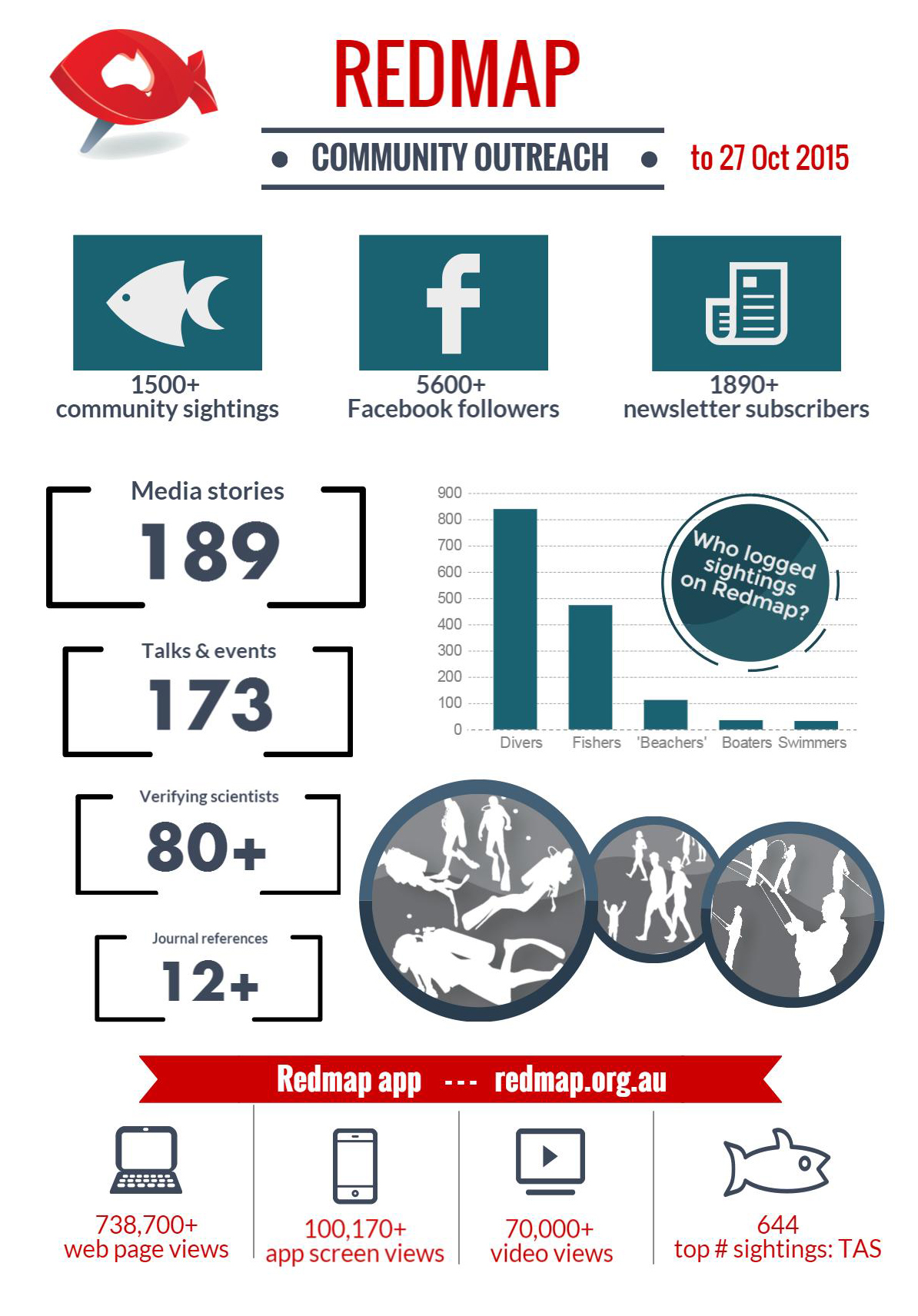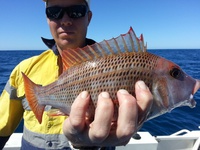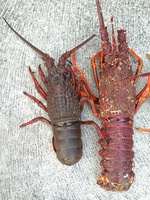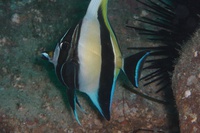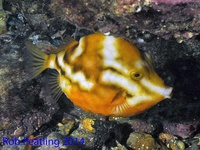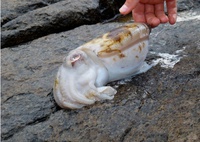Top 3 Redmap sightings and other community data
The Redmap Team, 30 Nov 2015.
Australian fishers, divers and beachcombers have documented some 1500 sightings of marine life they considered uncommon in their local seas. Many of the Redmap sightings were species out of their usual home range (distribution); and others were valuable observations of rare or poorly-studied species that we'll track over time. And it looks like the scuba divers beat the fishers for uploading the most sightings on Redmap! Here's a snapshot of Redmap's citizen science data.
-
WESTERN AUSTRALIA'S most reported species was the redthroat emperor (Lethrinus miniatus). (Photo: 'jsmolly')
-
TASMANIA'S top species was the eastern rock lobster (Sagmariasus verreauxi). The lobster on the left is an eastern; the one on the right is the endemic southern rock lobster (Jasus edwardsii). The eastern rock lobster is more common in mainland seas but these were caught south of Hobart by Alex Hunnibell.
-
NEW SOUTH WALES' most reported species was the Moorish Idol (Zanclus cornutus). We ask Redmap members to log this fish below Port Stevens to better map its distribution (Photo: Tom Davis).
-
QUEENSLAND'S most reported fish was Barramundi (Lates calcarifer). We ask Queenslanders to log this iconic fish if seen south of Bundaberg so we can gain a better understanding of its southern distribution and if it's on the move. Photo: Timothy Kusetic
-
VICTORIA'S most reported species was the whitebarred boxfish (Anoplocapros lenticularis). It's a common species along Victoria's western coastline but Redmap would like to see if it is moving south or further east (Photo: Rob Peatling).
-
SOUTH AUSTRALIA's 'most sighted' species was the giant cuttlefish (Sepia apama). Giant cuttlefish occur across southern Australia but aggregate to breed near Point Lowly in the Spencer Gulf. This is the only known breeding aggregation in the world for this species. We need more sightings to better assess its distribution (Photo: Andy Burnell).
Top 3 Redmap Sightings
The most-reported Redmap species, both in and out of their usual home range, for each state are:*
Western Australia (click on links to view the species):
1. Redthroat emperor (Lethrinus miniatus)
2. Spangled emperor (Lethrinus nebulosus)
3. Blue marlin (Makaira nigricans)
Tasmania:
1. Eastern rock lobster (Sagmariasus verreauxi)
2. Yellowtail kingfish (Seriola lalandi)
3. Zebrafish (Girella zebra)
New South Wales:
1. Moorish idol (Zanclus cornutus)
2. Brokenline wrasse (Stethojulis interrupta)
3. Threadfin butterflyfish (Chaetodon auriga)
Queensland:
1. Barramundi (Lates calcarifer)
(more community observations are needed from QLD fishers and divers!)
Victoria:
1. Whitebarred boxfish (Anoplocapros lenticularis)
2. White ear (Parma microlepis)
3. Rock blackfish (Girella elevate)
South Australia:
1. Giant cuttlefish (Sepia apama)
2. Leatherback turtle (Dermochelys coriacea)
(again, we need more citizen science data from SA divers, fishers and boaters!)
* Reviewed by Dr Jemina Stuart-Smith from Redmap up to 27 October 2015.
Who reported these sightings?
Some 56% of Redmap sightings were logged by divers, followed by fishers (32%), beachcombers (8%) and the rest by boaters and swimmers, as shown in the chart below:
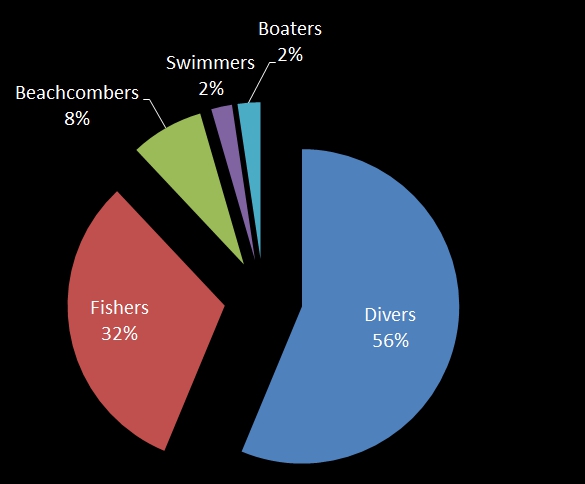
Which state reported the most sightings?
Tasmanians logged the most sightings (followed closely by New South Wales)! This is to be expected as Redmap observations were collected in Tasmania for three years longer than the rest of the country (the project started in Tasmania in December 2009).
Of note is that Tasmania's east coast seas are warming at almost four times the average global rate. Tasmania is therefore experiencing more obvious changes in species distributions: more sea life are turning up further south than usual to follow their preferred sea temperatures.
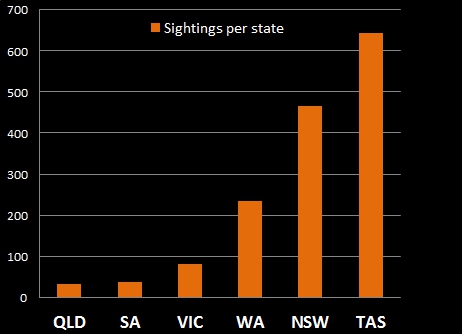
What does Redmap's citizen science mean?
Redmap cannot yet confirm if species like the Moorish idol in New South Wales or the whitebarred boxfish in Victoria are migrating further south. Redmap needs more community observations to indicate which marine species are just visiting a new region seasonally (for example, via the East Australian Current in summer) or if they are shifting their distributions south in response to climate change and ocean warming.
Redmap founder Associate Professor Gretta Pecl from the Institute for Marine and Antarctic Studies says scientists need help to monitor all of Australia’s 60,000 km coastline.
“There are thousands of people on the water everyday around the country who can help us track sea animals," Gretta says. "Redmap's network of 80-plus scientists around the country verify the observations and they become data points."
Australia’s east coast, in particular, is considered an ocean warming ‘hotspot’ where average sea surface temperatures increased by 2.28 degrees Celsius over the last 100 years. Gretta expects some Australian marine life will adapt to warming seas. But others may not cope so well.
“Some marine populations may shrink or slowly die out with changing conditions,” Gretta says. “Others will likely follow their preferred water temperature south.”
If marine populations keep shifting south some of the cooler-water species may find themselves at the end of the world, literally, without a suitable home to flee to.
Redmap's community data will help prepare recreational and commercial fishers for potential changes in the types of fish they may catch in the near-future.
Public Outreach
Redmap engages the public with climate change and its impacts on marine environments through public participation (citizen science). Regional Redmap coordinators around the country also reach the public via the media, social media, scientific publications and marine events. Check out this infographic of Redmap's outreach stats:
